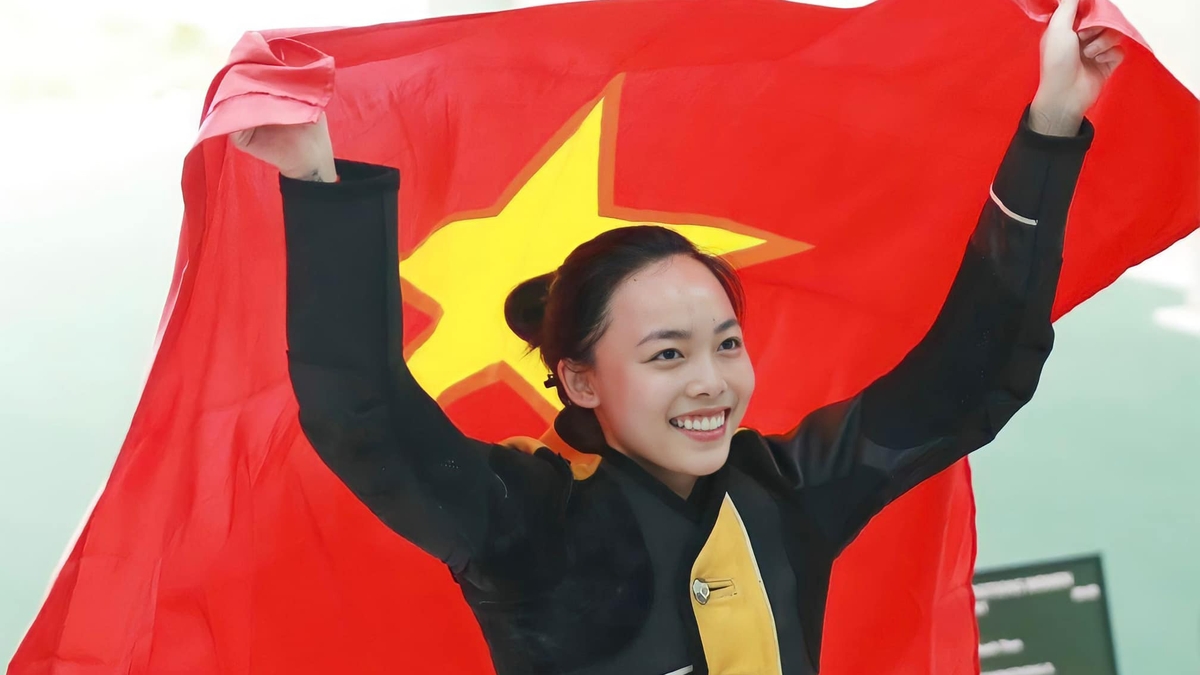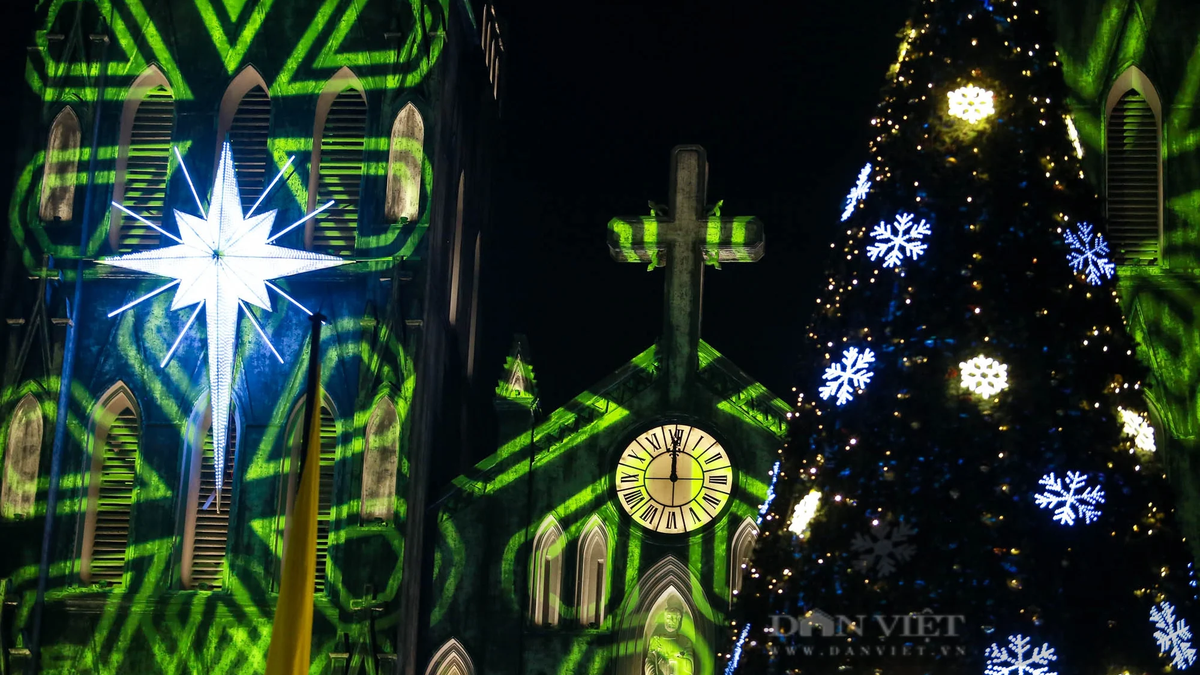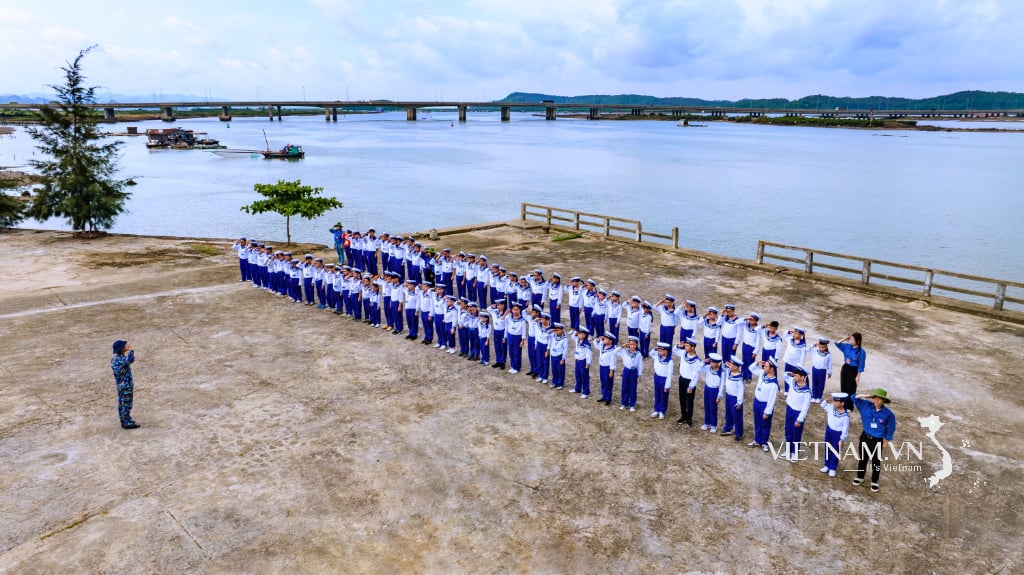People in difficult circumstances receive eye surgery.
It wasn't just Mr. Cong; little Do Minh Quan ( from Hoa Binh ), the son of a visually impaired couple, also faced the risk of blindness due to congenital cataracts. His family, living in a remote mountainous area, was also very poor and lacked the financial means for treatment.
For Vu Quynh Anh (born in 2007), who suffers from mature white cataracts, she can only distinguish between light and dark. Since childhood, Quynh Anh has faced diabetes, which has led to serious complications directly affecting her eyesight.
Quynh Anh confided that she had given up on eye surgery and treatment because of her family's extreme poverty and her mother's hardships. However, deep down, she still longed to have clear eyesight so she could go to school and study like her peers…
Those eyes that seemed destined never to see the light have now been given hope thanks to the charitable program "Free Your Eyes," organized by Dong Do Hospital. This program supports disadvantaged individuals by providing them with the opportunity to receive free eye examinations, treatment, and surgery.
In addition, the hospital continues to implement a program offering 100 free intravitreal injections. This method involves doctors injecting medication directly into the eye, delivering it to the affected area such as the retina or macula, allowing the medication to act faster and more effectively, achieving optimal treatment results (for treating diabetic retinopathy, age-related macular degeneration, blood vessel blockage, eye infections, etc.).
![[Video] Application of AI technology in refractive error treatment 1](https://image.nhandan.vn/w790/Uploaded/2025/wpxbhqrnd/2025_04_27/z6547663611821-3a1bfa0cfec98b8d44edb0d2dd124a84-7517-2059.jpg.webp) |
| Patients are examined using modern methods. |
After nearly three years of operation, the project has brought sight to hundreds of patients across the country. Hundreds of patients suffering from eye conditions, from cataracts to severe refractive errors, have received financial assistance for examinations and surgeries as part of this charitable program.
Beyond offering the chance to restore vision, these surgeries also help many patients overcome difficult circumstances, regain their ability to work, and improve their quality of life.
Applying new technologies in the treatment of refractive errors.
The practice of "tailor-made" treatments in healthcare , particularly in the treatment of eye diseases, which personalizes the treatment process and optimizes accuracy for each patient, is a global trend.
Next-generation laser techniques focus on minimizing invasiveness, shortening recovery time, and increasing precision in each surgical procedure. The simultaneous application of 3D imaging technology and real-time eye-tracking systems allows for personalized treatment plans for each patient, improving success rates and reducing postoperative complications.
![[Video] Application of AI technology in refractive error treatment 2](https://image.nhandan.vn/w790/Uploaded/2025/hficbupwqvbucq/2025_04_26/c413400-06-49-02still002-3626-2172.png.webp) |
"Tailoring" in medicine, especially in the treatment of eye diseases, helps to personalize the treatment process and optimize accuracy for each specific condition. |
After one year of applying SmartSight myopia correction technology, the High-Tech Eye Center at Dong Do Hospital is the leading unit in Vietnam and Asia in terms of the number of SmartSight myopia correction surgeries performed. In 3 months, the unit successfully performed more than 500 surgeries, and after only 5 months, this number reached 1,000 cases.
According to Associate Professor Dr. Tran Anh Tuan (former Director of Ho Chi Minh City Eye Hospital), SmartSight is a technological advancement, in line with the current trend of minimally invasive refractive surgery becoming popular worldwide . This is a new method, and its application requires a specific assessment of eye parameters, pathological conditions, and other factors to determine its suitability for each patient.
![[Video] Application of AI technology in refractive error treatment 3](https://image.nhandan.vn/w790/Uploaded/2025/wpxbhqrnd/2025_04_27/mig05198-1-3185-4420.jpg.webp) |
| In Vietnam, this technology has been applied to many cases of high myopia and complex astigmatism, resulting in significant improvements in vision after surgery. |
With this new technique, the laser treatment time is shortened, averaging only about 15 seconds per eye. Using optical axis centering and rotational movement compensation, it allows for better control of small eye movements during surgery.
Furthermore, the lower suction force during intraocular pressure creation results in greater patient comfort and minimizes the risk of complications compared to traditional methods. Regarding recovery, clinical studies show that the majority of patients achieve stable vision within 24 to 48 hours after surgery. This technology also prioritizes corneal tissue preservation with a small incision of approximately 2mm, contributing to reduced risk of dry eyes and post-operative blurred vision.
Source: https://nhandan.vn/video-ung-dung-cong-ai-trong-dieu-tri-khuc-xa-post875688.html


![[Photo] General Secretary To Lam visits the exhibition space showcasing books, photo exhibitions, and achievements of digital transformation in journalism.](/_next/image?url=https%3A%2F%2Fvphoto.vietnam.vn%2Fthumb%2F1200x675%2Fvietnam%2Fresource%2FIMAGE%2F2025%2F12%2F19%2F1766110879215_1766110240024-jpg.webp&w=3840&q=75)



![[Photo] Enchanting ancient rose garden on the mountainside in Nghe An](/_next/image?url=https%3A%2F%2Fvphoto.vietnam.vn%2Fthumb%2F1200x675%2Fvietnam%2Fresource%2FIMAGE%2F2025%2F12%2F19%2F1766109900916_vuon-hong-chin-do-thu-hut-du-khach-toi-check-in-o-ha-noi-3-20162778-1671624890024-1671624890104198100259.jpeg&w=3840&q=75)

































































































Comment (0)